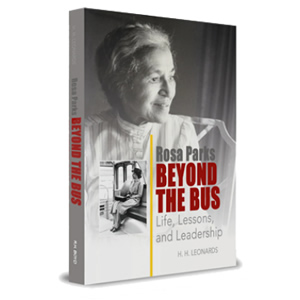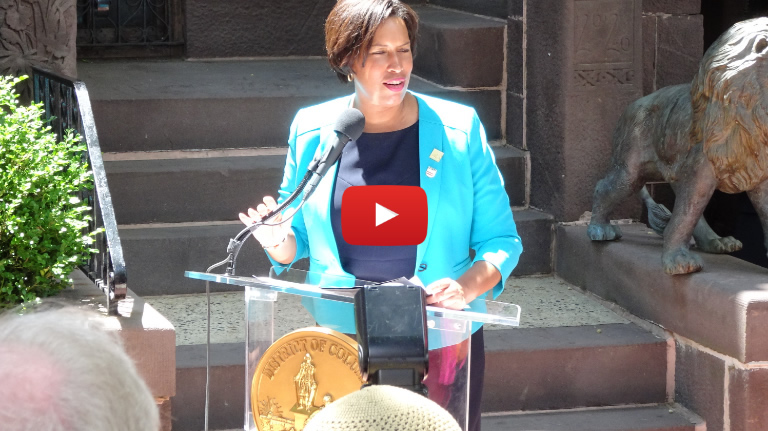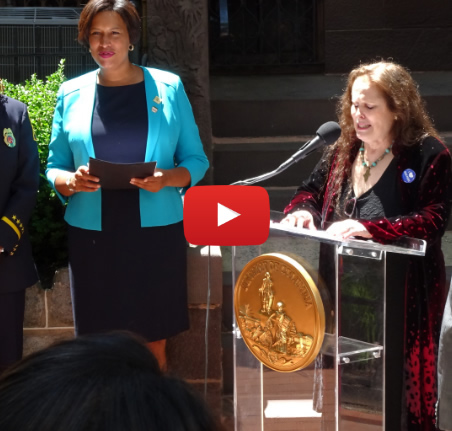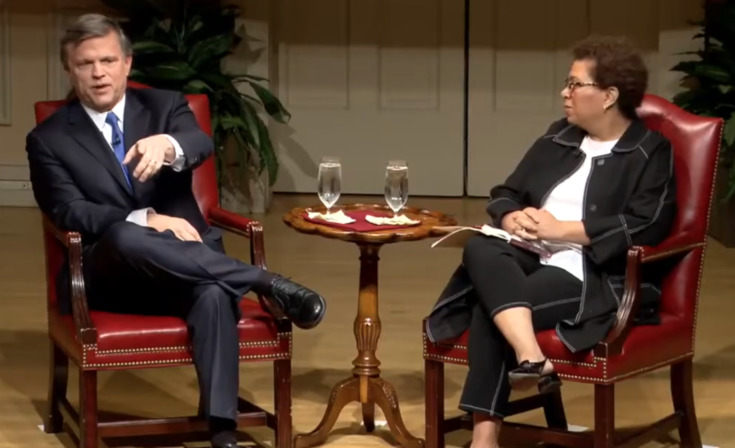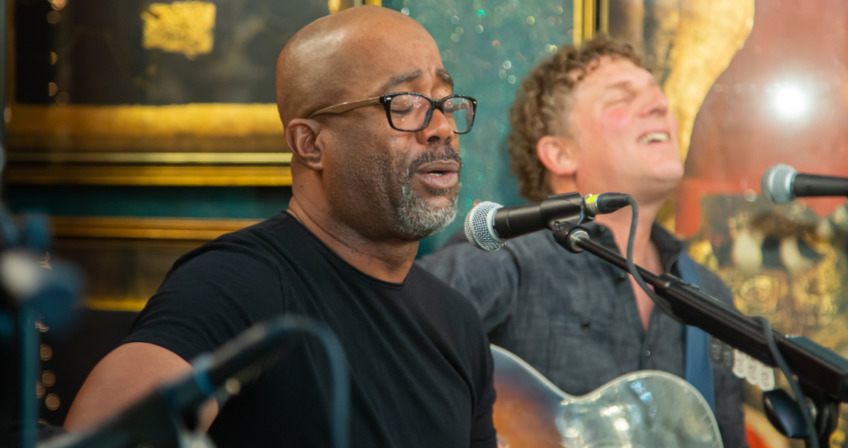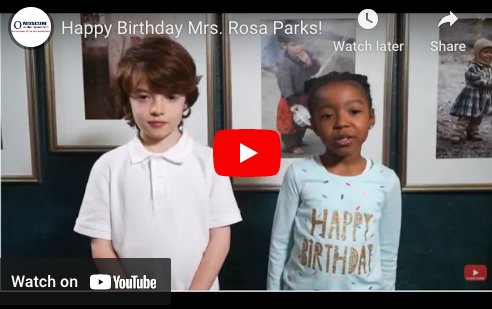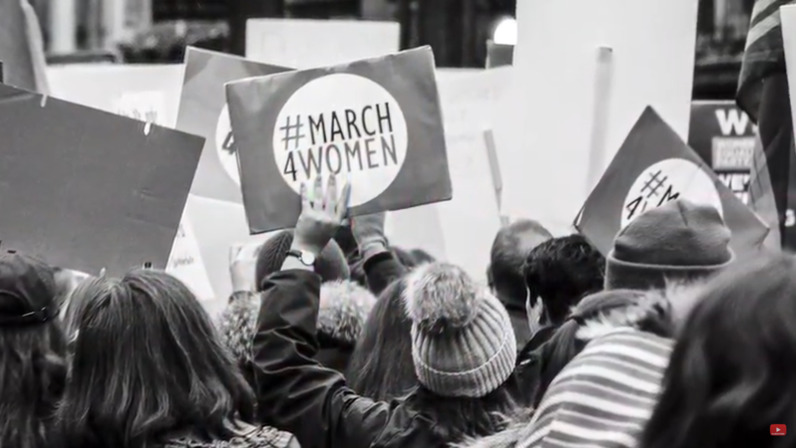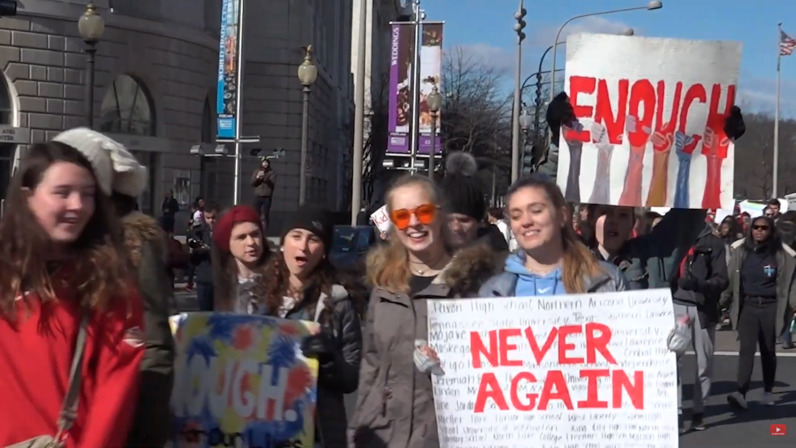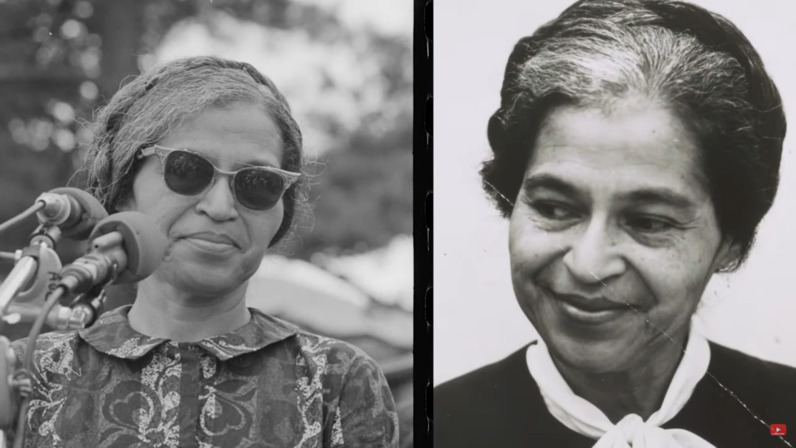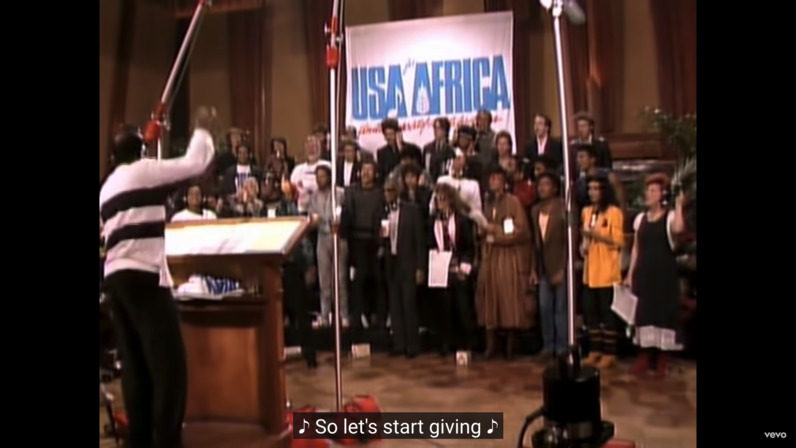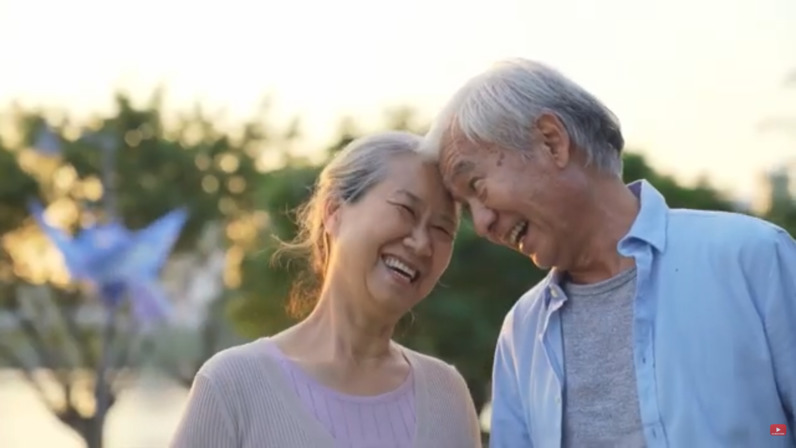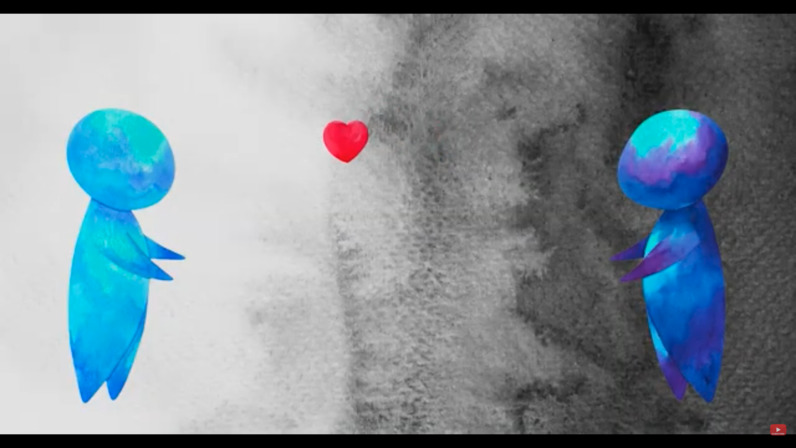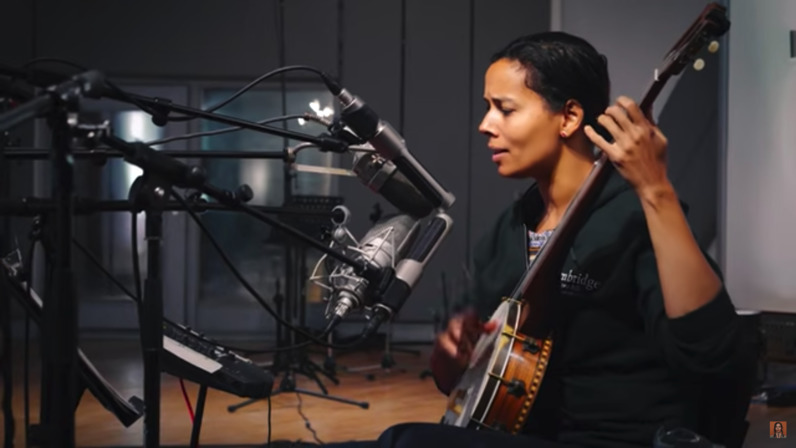Mrs. Rosa Parks & "The" O
-
 “This is a great informative book. I was surprised on every page and had trouble stopping even from going to bed. I finished reading it before I knew it. I learned so much. Well written. So much information and facts. Love it and brought copies for several of my friends.”
“This is a great informative book. I was surprised on every page and had trouble stopping even from going to bed. I finished reading it before I knew it. I learned so much. Well written. So much information and facts. Love it and brought copies for several of my friends.”
— Wardell, Amazon Book Reviews -
 “The Mansion was Mrs. Parks' home-away-from home where I visited with her many times. Like the 80-plus secret doors there, leading to stunning rooms throughout, this book opens doors into the innermost thoughts of Mrs. Parks - sometimes sad, sometimes joyful, but always insightful.”
“The Mansion was Mrs. Parks' home-away-from home where I visited with her many times. Like the 80-plus secret doors there, leading to stunning rooms throughout, this book opens doors into the innermost thoughts of Mrs. Parks - sometimes sad, sometimes joyful, but always insightful.”
— The Reverend Jesse Jackson, American Activist -
 “Like hidden doorways at The O, there are whispered life lessons scattered throughout this poignant and powerful sharing of H's friendship with a very human American saint.”
“Like hidden doorways at The O, there are whispered life lessons scattered throughout this poignant and powerful sharing of H's friendship with a very human American saint.”
— Paul Williams, songwriter, ASCAP President and Recovery Advocate -
 “She peels back the layers of documentation on the life and journeys of Mrs. Parks by sharing firsthand experiences .... making this book not only a story, but an essential item in the toolkits of today's social justice-warriors.”
“She peels back the layers of documentation on the life and journeys of Mrs. Parks by sharing firsthand experiences .... making this book not only a story, but an essential item in the toolkits of today's social justice-warriors.”
— Diem Jones, Co-Founder Voices of Our Nations Arts Foundation -
 “Mrs. Rosa Parks' legacy of advocacy and compassion inspires all who learn of her strength, dignity and warmth -- traits that are as vital today as ever. Mrs. Parks' lessons in leadership are more important now than ever.”
“Mrs. Rosa Parks' legacy of advocacy and compassion inspires all who learn of her strength, dignity and warmth -- traits that are as vital today as ever. Mrs. Parks' lessons in leadership are more important now than ever.”
— Greg Harris, President/CEO, Rock & Roll Hall of Fame & Museum
Rosa Parks Beyond the Bus
Rosa Parks Beyond the Bus: Life, Lessons, and Leadership is an inspiring book about having faith in yourself to do the hard work to change hearts and minds — and to have the courage to fight for the rights of all others: Black, White, religious, non-religious, men, women, and children.
This book explores many of the things Mrs. Parks did that history books don't teach. It is a collection of personal stories compiled from the decade that Mrs. Parks lived and traveled with the author.
Mrs. Parks is much more than someone who refused to get up from her bus seat. She was a survivor and the ultimate influencer of generations to come. She believed the laws can change but if you don't change people's hearts nothing changes. She believed Love is all that matters.
About the Author: HH Leonards
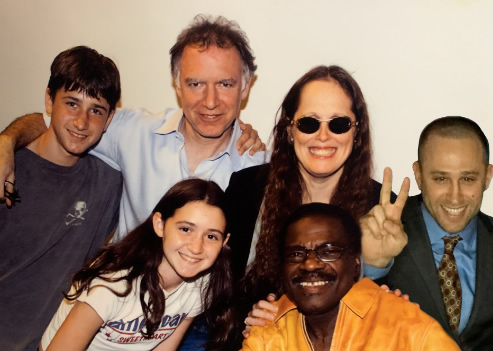
Sonny, Ted, H, Z, Hannah, Billy Preston
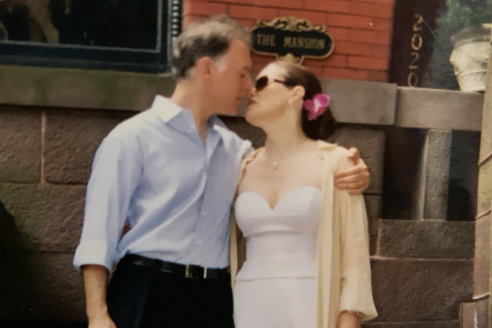
Ted & H, Easter Sunday 2003
H.H. Leonards is a wife, mother of three, founder of O Museum in The Mansion, founder of PIRmarketing.com and co-founder of 51StepsToFreedom.org. Mrs. Rosa Parks and her friends and business associates lived here as part of The Mansion and O Museum's heroes-in-residence program. O Museum in The Mansion is now A Historic 20th Century Civil Rights Site, on The African American Heritage Trail. It has been featured in books by James Patterson and Hunter Davies as well as National Geographic Traveler, Smithsonian Magazine, Wall Street Journal and more.
She has authored seven books and her writings have appeared in Newsweek and Ms. Magazine. She has been a featured speaker at The Rosa Parks Museum (AL), The National Museum of African American Music (TN), The National Underground Railroad Freedom Center (OH), The Sonoma Valley Authors Festival (CA), The Southern Kentucky Book Festival, and the Southern Festival of Books (TN) as well as numerous global TV, radio and podcasts.
“This book is about not just an extraordinary revered figure in history, but about her soul and heart -- and the lessons of leadership she taught me.”— H.H. Leonards
Mrs. Parks Life in DC
Mrs. Parks' story, legacy, and connection to Washington, D.C. is little known — and yet, critical to the work she did. From 1994 to 2004 O Museum in the Mansion was the place Mrs. Rosa Parks called her home-away-from-home — staying here at no cost — as part of our Hero-in-Residence program.
Many historic moments occurred in our hallowed halls while Mrs. Parks was with us. They included, negotiations with Congress and The White House on many important issues. Among them were her participation with First Lady Hillary Clinton at President Clintons' State of the Union Address January 19, 1999, her Congressional Medal of Honor, her statue in the Halls of Congress (the first woman ever honored there), conversations with the Vatican regarding working with the Pope to combat racism and support human rights, and the discussions to form the Rosa Parks Museum in Montgomery, Alabama.
A Common Goal: Civic Responsibility For All
“There is only one race, the human race.”— Mrs. Rosa Parks
O Museum (501c3) is focused on healing systemic racism — and disparity — by promoting human rights through compassion and understanding. We are focused on carrying on the life's work of Mrs. Rosa Parks in youth development and civil rights education and advocacy. Volunteers with professional, technical, and international backgrounds are recruited and trained to share their knowledge and skills reflecting Mrs. Parks' approach to self development.
Mrs. Rosa Parks believed deeply in civic responsibility. Her work included active participation in the community, with a focus on the common good. Thus, our programs uphold values that include justice, freedom, equality, diversity beyond color, human rights, tolerance, and self respect.
We also create customized multi-tiered self empowerment programs and training globally. We provide tools for children to better themselves — and for companies to add depth, context — and solutions — to all levels of their organization.
Bringing people together to change hearts and minds
Founded in 1980, O Museum in the Mansion's mission is to inspire creativity, diversity, and imagination through the fusion of the arts, music, science, and sports. We empower people to dare to be different — and achieve things beyond what they know. The O Museum has been a leader in promoting equality, diversity, and civic responsibility for over 40 years and is a sanctuary — impacting over one million people from 50 states and 102 countries. Our arts and educational programs focus on bringing people together to change hearts and minds — to end systemic racism and disparity.
Programs Mrs. Parks Participated In and Inspired
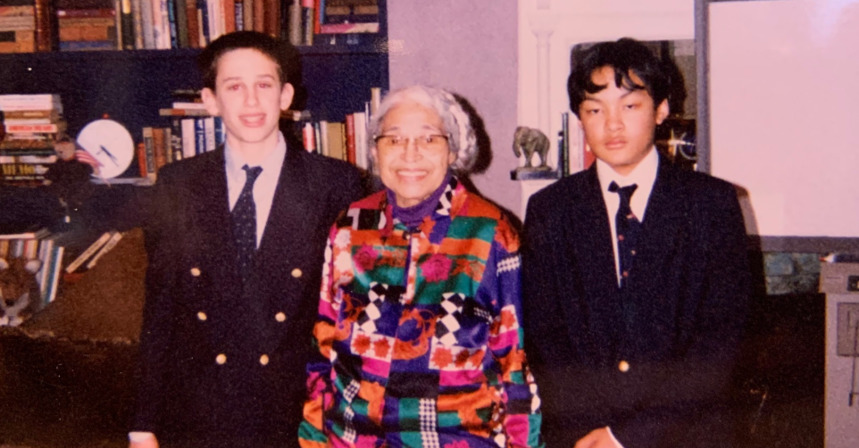
Mrs. Rosa Parks believed deeply in civic responsibility. Her work included active participation in the community, with a focus on the common good. Our multi-tiered education and empowerment programs uphold values that include justice, freedom, equality, diversity beyond color, human rights, tolerance, and self respect.
To help dismantle systemic racism, we provide tools for children to better themselves, for individuals to find understanding, and for companies to add depth, context, and solutions to all levels of their organization.
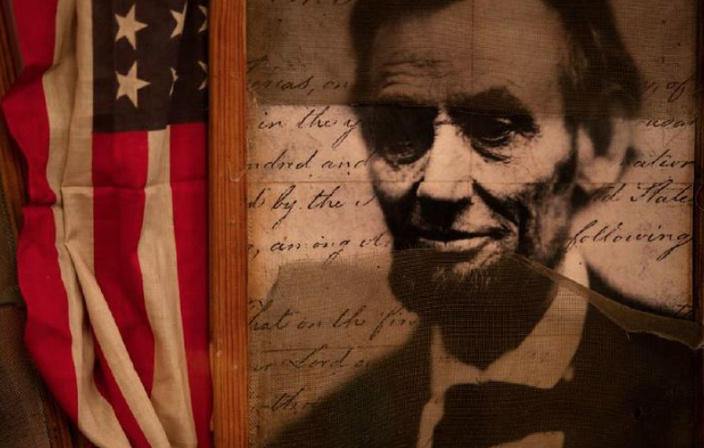
51 Steps To Freedom is the 1st trail of its kind uniting DC - from Anacostia to Georgetown - and back again. It combines history, storytelling, digital and traditional art, music - and cutting edge technology - to inspire, educate, and tell the stories of the hidden figures and places in DC that continue to shape America's journey for freedom and equality. It is powered by O Museum in the Mansion.

The O Museum provides a haven for the heart and soul (at no cost) for soldiers, service people, first responders and all those who are giving of themselves to serve others.
Mrs. Rosa Parks stayed with us on and off from 1994 to 2003 as part of our Heroes Program.
Every year for the past 40+ years we have provided over 1,000 free room nights a year to support these programs.

From gender and politics to religion and race - the world is more divided today than it has ever been. We believe music has the power to unite us - it can teach, it can heal, and it can change hearts. Our programs promote understanding and unity through the arts.
Over a million people have been impacted by our programs. Each year $720,000 is needed to fund this program and further our mission.

Did you know Mrs. Parks loved baseball? Her personal hero was Frank Robinson and whenever she could she took children from the inner city to see games with her.
Being an athlete is a major form of creativity - just like painting or music, or any other form of art. Through our experiences and exhibits, we bring this concept to life: being active helps children develop physical skills, get exercise, make friends, have fun, learn teamwork and how to play fair.
Sports also helps to contribute to our emotional and physical health by generating positive energy that can be transformed into action, creativity, and innovation.
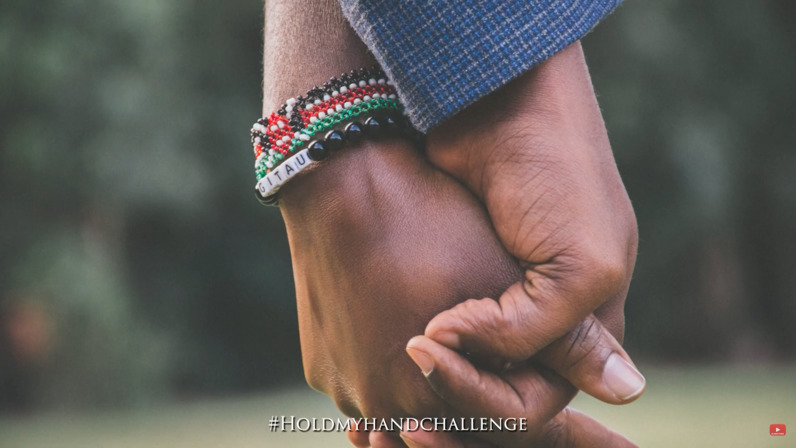
To celebrate the life of Mrs. Rosa Parks we are asking you to come together and hold hands with your friends, family, pets, neighbors, school mates, and office mates starting February 4th.
Help spread Mrs. Parks' messages of hope, unity, and love when you participate - document and share your hand holding experience on your favorite social channel and invite 3 friends to do the challenge as well.
Thank you Hootie & The Blowfish for lending your song "Hold My Hand" to this movement
Experience the movement CLICK HERE
20th Century Civil Rights Site
We are honored to have been included as a historic site on The African American Heritage Trail by Cultural Tourism DC.
Mrs. Rosa Parks helped spark the American civil rights movement in 1955 by refusing to give up her seat to a white man on a segregated Montgomery, Alabama bus. That act made her one of the most important women in American history and earned her the nickname “Mother of the Civil Rights Movement.”
In 1994 H.H. Leonards, Founder of The O Museum in The Mansion received a phone call from Brother Willis Edwards, head of the NAACP in Beverly Hills (and also the founder of the NAACP Image Awards) saying Mrs. Parks had been attacked and beaten in her home in Detroit and needed a safe place to heal and rest. Lady H (as Mrs. Parks called her) invited her and her close friends to stay for free as part of The O Museum's Heroes-in-Residence Program.
Lady H was invited by Mrs. Parks to be a founding member of her museum, the Rosa Parks Museum which opened on December 1, 2000 in Montgomery, Alabama.
Mrs. Parks passed away on the 24th of October 2005 in her Detroit apartment. Her body laid in state at the Capitol Rotunda, the first woman to have ever been given this honor. She became the first African American woman to be honored with a life-size statue in the Capitol. Lady H was a pallbearer at her mentor's three funerals, in Montgomery Alabama, Washington D.C. and Detroit Michigan.
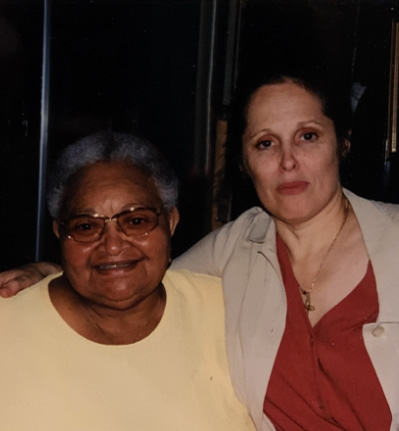
Ms. Mamie Till-Mobley (Emmit Till's mother)
& H.H. Leonards at O Museum in the Mansion
Mrs. Rosa Parks met with dignitaries, heads-of-state, and leaders, including President Clinton, Secretary of State Madeleine Albright, Benjamin Hooks, and Dorothy Height here. Close friends of Mrs. Parks stayed with her while she was living here, including Cicely Tyson, Mamie Till, Miles Davis, Angela Bassett, Artis Lane and her closest friend Mrs. Elaine Steele, Co-Founder of The Rosa and Raymond Parks Institute, in Detroit, Michigan. A deeply religious woman, Mrs. Parks hosted formal monthly First Sunday Gospel Brunches here, where guests wore a hat and white gloves.
Mrs. Parks passed away on the 24th of October 2005 in her Detroit apartment. Her body laid in state at the Capitol Rotunda, the first woman to have ever been given this honor. She became the first African American woman to be honored with a life-size statue in the Capitol. Lady H was a pallbearer at her mentor's three funerals, in Montgomery Alabama, Washington D.C. and Detroit Michigan.
The African American Heritage Trail identifies sites that are important in local and national history and culture -recognizing the people and places that have shaped our city. A plaque commemorating Mrs. Parks was recently installed and can be seen when you visit.
Mrs. Parks Lives On Through Us
“If a movement is to start again, giving us all the dignity that we deserve
then it's possible that more leaders of the future will sit down to stand up for what they believe.” — Mrs. Rosa Parks
Mrs. Rosa Parks was far more than an icon in history and a survivor. She was a person whose impact will forever be among us. Mrs. Parks was an influencer, long before the term became trendy within social media circles. What she accomplished she did without malice. All things were done by her with humility and with a kind, loving heart.
Mother Parks is the seminal point in the history of civil, human and women's right. Her time is now.

Did you know that 25 years before "the bus" Mrs. Parks traveled throughout the South - in the 1930's - to document the stories of Black rape victims? Twelve years before "the bus" it was Mrs. Parks who investigated the Rape of Recy Taylor, a wife, mother and scarecropper from Alabama. She didn't stop with the documentation, she founded the "Committee for Equal Justice" which became the catalyst for Black women's civil rights resistance.
In the 1960's she protested against the Vietnamese war with Mohammed Ali. She referred to Malcolm X as her personal hero. She joined the Black Panther Movement and she helped found NOW. In 1968 she began to lobby for Black reparations. In the 1970's she became a vegetarian and began to teach children about recycling at her Institute in Detroit! The list of trailblazing firsts goes on and on.

It's simple. She often said, "When you fall down, you get up."
Mrs. Parks came to stay with us after Lady H (as Mrs. Parks fondly called her) received a phone call from Brother Willis Edwards, head of the NAACP in Beverly Hills (also founder of The Image Awards) saying Mrs. Parks had been attacked and beaten at the age of 81 in her home in Detroit, and needed a safe place to heal and rest.
Brother Willis said she was in very bad shape and he didn't know when she would be released from the hospital. Sadly, I actually did not know who Mrs. Parks was. But I said yes."
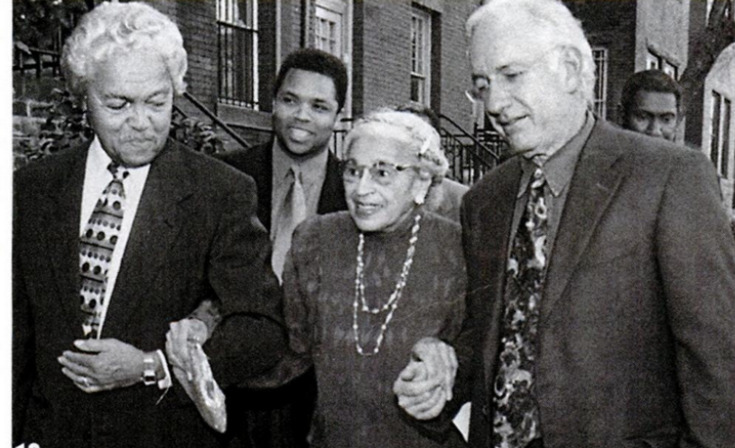
"In late September of 1994, Mrs. Parks graced my door, and forever impacted my life in the sanctuary of The Mansion on O Street, right in the center of our Nation's Capital, 2020 O Street, N.W.
For the first few years she was here, I knew her heart, but I did not know what she had accomplished. It was several years before I learned that she was famous. What is strange looking back is I now realize I am a person who simply believes in blind faith and asks no questions. For me blind faith is a good thing. It allows me to love, with no thought of gain. I could thus come to love, purely. With love, you don't look for someone to complete you, but for someone to share your completeness.

Mrs. Parks didn't see color, although she was not color blind.
She was proud of her DNA (she was Black, White and Native American) but was deeply affected by discrimination throughout her life — not just from White people but also from other groups she was part of. That meant Black people, White people, Native American people-and yes, women.
Instead of complaining or growing bitter, she chose instead to use discrimination to fuel her focus. Not on just one group, but to fight for human dignity of all races, creeds, and religions. Mrs. Parks believed, wrote, and spoke again and again: "I believe there is only one race - the human race."

Mrs. Parks was adamant that associations with people based on any "group" was discriminatory. She went deeper in her book Dear Mrs. Parks, writing:
"They must learn from us that love knows no color. They must learn from us that respect knows no color. They must understand that they were all created by the same God, who created us all, in His image."
She believed that no progress would be made until no one saw "color," or grouped people by age, or separated them by religion, and stopped judging others by the hierarchy of their employment. She firmly believed that the only way to effect change is to let go of stereotypes and groups and focus on being equal in all respects.
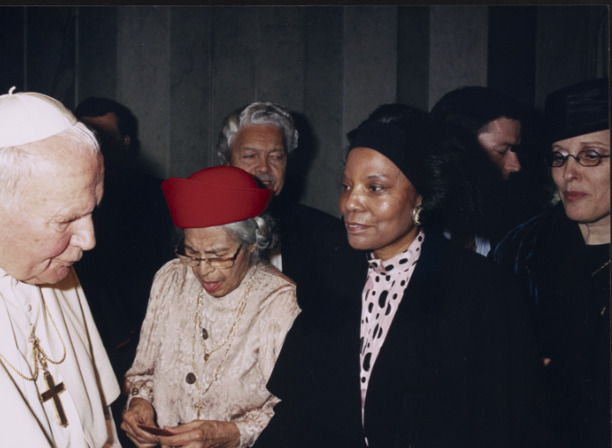
On January 26, 1999, Pope John Paul II made a whirlwind trip to St. Louis. On the way to meet him, Mrs. Parks asked me to sit next to her on the airplane. ...Halfway through the flight she turned to me, still holding my hand and said, "I need your help. I want to write something to the Pope in my own handwriting..."
I said to her, "Mrs. Parks, I never thought of saying anything to the Pope. I just thought it was amazing that we would have the opportunity to meet him... She looked at me for a long time... she didn't judge me... she thought for a long time and said, "Lady H, you have to understand when God gives you the opportunity to speak to anyone, you have to seize the moment."...

If you have a story about how Mrs. Parks changed your life and/or photos of you and Mrs Parks, please click here to send them to us at, and we will post them on our website and/or our new book! Help share her works today. Everyone needs to know her message of hope:
"As I grow older, I see that there is so much work to do. I want to share the message of peace and justice for all of humanity with the world. I am grateful to God for this long life. I am thankful that he has used me to fulfill some of His plans." (Mrs. Rosa Parks, Dear Mrs. Parks: A Dialogue with Today's Youth
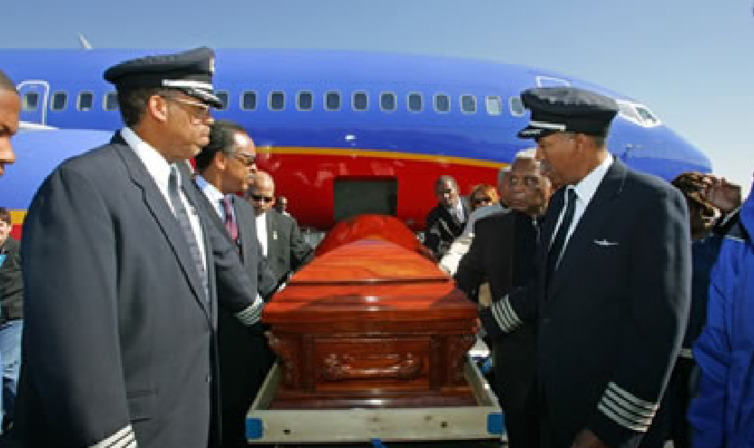
"One Sunday afternoon during Mrs. Parks' birthday tea, the couple across the street called the police repeatedly about a party that "was disturbing the peace. Saying "... people of another color are breaking into The Mansion."
When the officers arrived they found 80 of Mrs. Parks' closest friends, mostly elderly, wearing hats and white gloves, listening to gospel music. When everyone's initial embarrassment passed the officers had a memorable time meeting a gracious Mrs. Parks ...
After "the incident," I apologized for my neighbor's behavior. Mrs. Parks turned to me and said, "Dear, this is okay. When those people go to sell their house, you need to buy it for me. That's how you deal with racism."
Lessons of Courage & Love
 H.H. Leonards & G.A Leonards (my Dad) Courtesy of O Museum in the Mansion
H.H. Leonards & G.A Leonards (my Dad) Courtesy of O Museum in the Mansion"My father G.A. Leonards was a simple man who changed the world in his field of civil engineering. His profession was about sound foundations — and he taught me well. When my father would visit us at The O Museum in the Mansion he would spend hours talking quietly with Mrs. Rosa Parks.
He told me one day I would write a remarkable book about her. It has now been four books; and I know there is at least one more inside of me, ready to be written. Mrs. Rosa Parks inspired me, beyond forever. She taught me to seize the moment.
My father told me that all the important words in Webster's Dictionary had five or less letters: love, hope, trust, faith, give. From his teachings, I discovered how important it is to keep life simple. You never leave home, no matter how early it is that you leave. Lessons your parents teach you have a lifetime effect.
But sometimes, it takes another person teaching the same lesson that makes it stick even deeper in your soul. Eventually you get to where you are going. It doesn't matter what route you take. Answers come in different forms, at different times. You just have to see through the fog life sometimes surrounds you with, to find your heart again. You must have the courage to know.”
Excerpt from the book Gems of Wisdom Mrs. Rosa Parks Taught Me by H.H. Leonards

Mrs Parks once told me, "Art, music, sports and writing are expressions of love." We are both loving people, although both of us love quietly, from afar, as we are both introverts." Perhaps because of this we both understand that love has lasting effects. Love means not just giving to others - but also allowing our giving nature to receive from others. Mrs. Parks, I am still learning from you. Love matters. Love is what matters. It's all that matters.
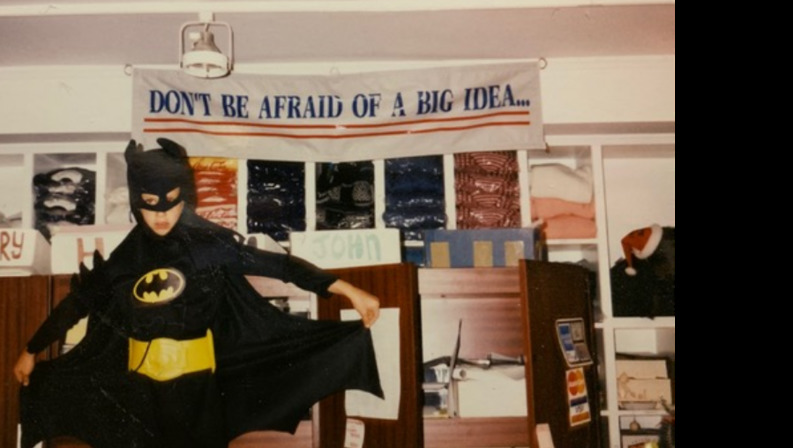
Mrs. Parks didn't see color, although she was not color blind, literally or figuratively. She was proud of her DNA but deeply affected by discrimination all her life, not just from White people, but other groups she was part of. That meant Black people, White People, Native Americans, and yes, women. Instead of complaining or growing bitter she chose instead to use discrimination to fuel her focus. Not on just one group, but to fight for human dignity for all races, creeds and religions. Mrs. Parks believe, wrote, and spoke again and again: "I believe there is only one race, the human race."
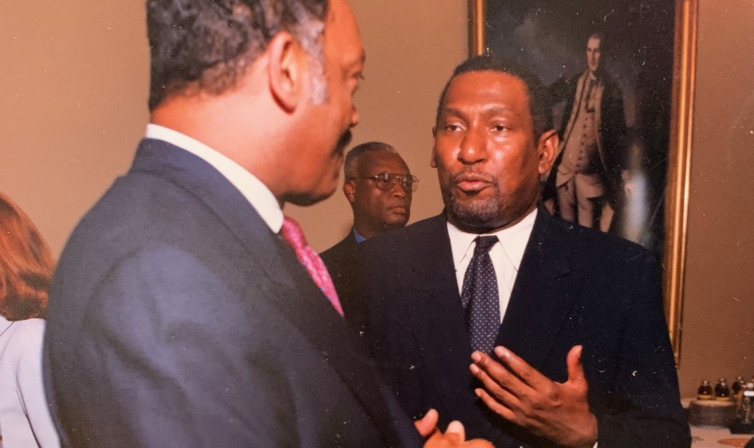
Mrs. Parks understood that if you do not forgive you can never move forward. No matter what happened to Mrs. Parks she made each experience a positive part of who she wanted to become.
Mrs. Parks said she felt like an orphan when she was a little girl, as her mother worked away from home to provide for their family after her father left them. She forthrightly documented this in her autobiography: "My mother was around 25 years old when I was born, but she always said she was unprepared to be a mother." ...
Mrs. Parks felt it was essential to be honest about her struggles so that children around the world would know that no matter what happend to them they could become Mrs. Parks too. "Life is about making positive choices," she frequently told me.

Mother Parks repeatedly throughout her life, denied herself comfort, pleasure and security so she could serve others ... but it was more than that, she knowingly and willingly picked up ... the cross that brings rejection from most of society... but is essential to serve those in need ... Despite living in an age when women were supposed to be seen, not heard, ... she triggered a movement, and remains the beam of light calling us to selfless action.
Mrs. Parks was a Deacon at the AME Church, but she couldn't be labeled a Christian, Muslim, Hindu, Jewish or Buddhist — she was a disciple of all faiths. She believed these designations only served to separate us from God.
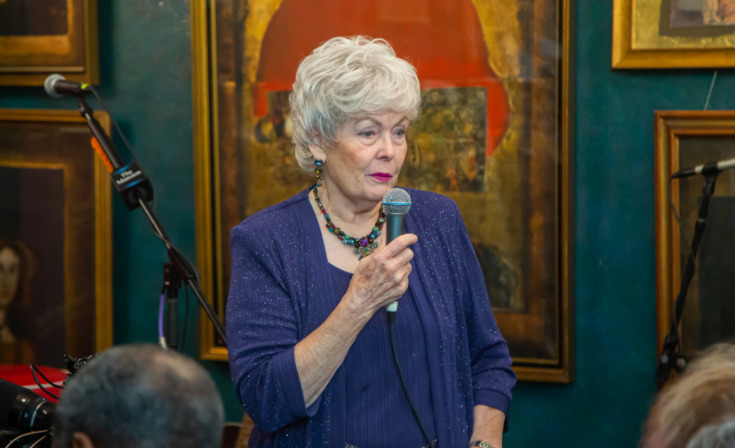
...in 1955 ...a young woman named Jane Gunter was on the Cleveland Street bus with Mrs. Parks. She was White, pregnant and in her late teens... Her husband was stationed at the Maxwell Airforce Base in Montgomery, where she was on her way to meet him. Not knowing "the silent dog whistle rules of color" when Mrs. Parks was told to give up her seat, Mrs. Gunter offered her seat to her, rather than have her move to the back of the bus.
A White man who was standing in front of her, holding onto the pole, blocked her with his knees and said "Don't you dare move..."
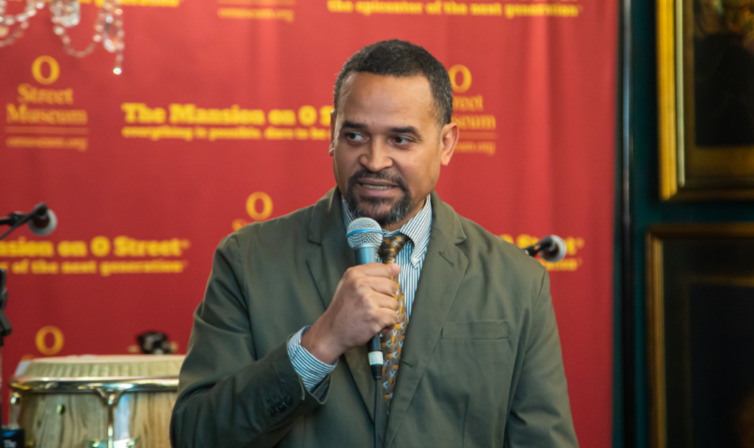
When Luis Clavel from the Library of Congress asked me to write a book about Mrs. Parks I envsioned an illustrated volume by and for children. But, one morning as I was working on it, I had an epiphany. It should be a book about her heart and soul ...
December 1, 2019 the Library of Congress opened an exhibit about Mrs. Parks ... the night-before we hosted a concert at the O Museum in the Mansion, with Darius Rucker and Mark Bryan of Hootie & The Blowfish, and Cyril Neville, of the Neville Brothers.
Cyril said something that night that continues to resonate with me. He said he was appalled to learn his own children did not know their history -- but knew every lyric to every rap song. So he wrote “Thank You Sister Rosa” so they would learn it.
Music Inspired By Mrs. Rosa Parks
Compassion is contagious - some of music's greatest artists have come together to create this groundbreaking collection of empowering music to promote compassion and spur reconciliation. Featuring a wide range of performers, songwriters, and musicians with an array of disciplines and points-of-view - this collection engages a wide audience to spur productive conversations and foster social harmony. From gender, to politics, to religion, to race - the world is more divided today than it has ever been. We believe music has the power to unite us. It can teach, change hearts, and heal us all.
We, like Mrs. Parks, imagine a world where kindness and understanding is the rule. These songs support her vision - offering listeners the opportunity to explore themselves, connect with a lyric, or be moved by a song. Music has a lasting effect, it can create bonds of empathy for one another to help bridge the divide. Now more than ever the world needs to be reminded of Mrs. Parks' gentle strength, her peaceful activism, and her capacity for compassion and forgiveness.
Videos created by PIR Perception is Reality, a 2020 O Street Corporation (part of The O Brands)
Be Inspired
‹ ›

Living My Own Religion
Mrs. Rosa Parks Prayer Breakfast - Tracy Halliday
Mrs. Rosa Parks Prayer Breakfast at O Museum in the Mansion
Happy Birthday Mrs. Rosa Parks! Thank you for all you have done for us. #HoldMyHandChallenge
Celebrating Cary Hatch: Mrs. Rosa Parks Woman of the Year Award Recipient
Congressman John Lewis' Inspiration — Mrs. Rosa Parks
Rock Newman Show feat H. H. Leonards
DYK These Things About Mrs. Rosa Parks
Rosa Parks Birthday Celebration
A Girl Scout's Rosa Parks Reflection
WMNF Community Speaks Podcast feat. H. H. Leonards
H shares Rosa Parks: Beyond the Bus with Caplin News
When H and Rosa Parks met the Pope
That All Might Know Love — From Our Album "Love Is All That Matters"
OFFICIAL "Thank You Sister Rosa" Featuring Cyril Neville & Mark Bryan
The Power of Love (My Wish) — Written by Gordon Titcomb, Performed by Felix Cavaliere
Smokey Robinson — You Are Forever
Jesse Colin Young : For My Sisters
"Band Together For America" Featuring Lee Roy Parnell, Felix Cavaliere, Joe Bonamassa (CC)
Love Is Love (Official Video) - Jeff Plankenhorn
"Band Together For America" Featuring Lee Roy Parnell, Felix Cavaliere, Joe Bonamassa
Making The Music: "Mrs. Rosa Parks" Featuring Cyril Neville & Mark Bryan of Hootie and The Blowfish
On My Way
Aretha Franklin & Rev. Jesse Jackson - "I'll Fly Away"
WUSA 9- Rosa Parks' Time Living in DC
C Span Interview - The Real Mrs Rosa Parks
C Span Interview - Defining Moments with my Mentor
C Span Interview - Leading by Example
C Span Interview - Love is all that Matters
C Span Interview - Truth Behind the Title
Mrs. Rosa Parks, Beyond The Bus Author on C-SPAN American History TV
NBC Washington Visited O Museum To Celebrate Rosa Parks Day
H speaks to Womens National Democratic Club
H.H. Leonards Author of "Rosa Parks Beyond the Bus" at the Carroll Arts Center
H's New Book!
Rosa Parks Beyond The Bus - Enough Featuring Ranky Tanky
ROSA PARKS BEYOND THE BUS: Life, Lessons, and Leadership
ROSA PARKS BEYOND THE BUS: Life, Lessons, and Leadership
WJLA Interview with H
Did You Know Things You Don't Know Or Remember About Mrs Rosa Parks With The Edlin School, VA
Aretha Franklin & Rev. Jesse Jackson - "I'll Fly Away"
Susan Reyburn, Author of Rosa Parks: In Her Own Words Discussing the Book at O Museum in The Mansion
Smokey Robinson — You Are Forever
Happy Birthday Mrs. Rosa Parks!


